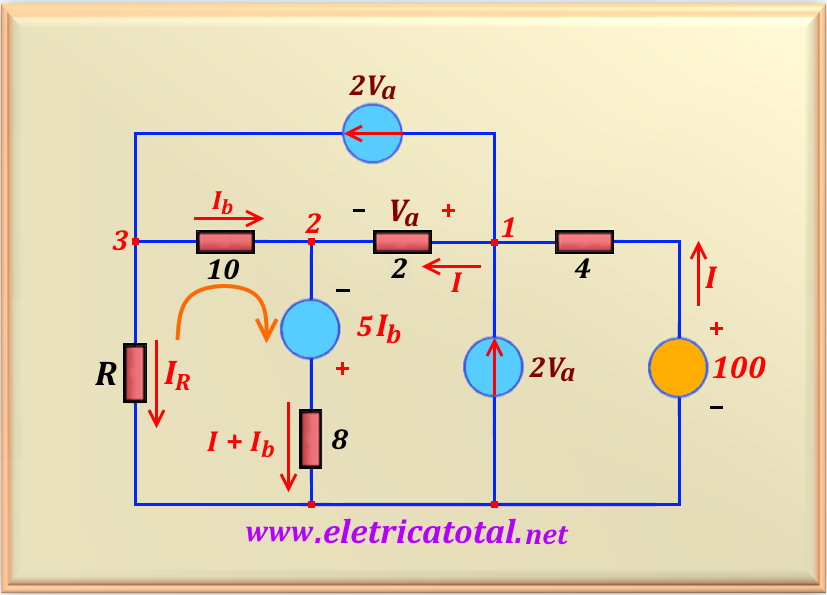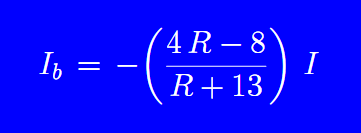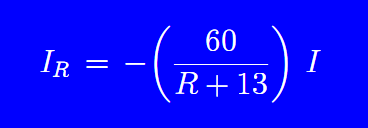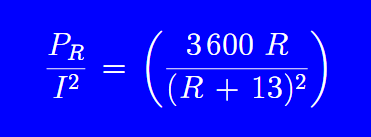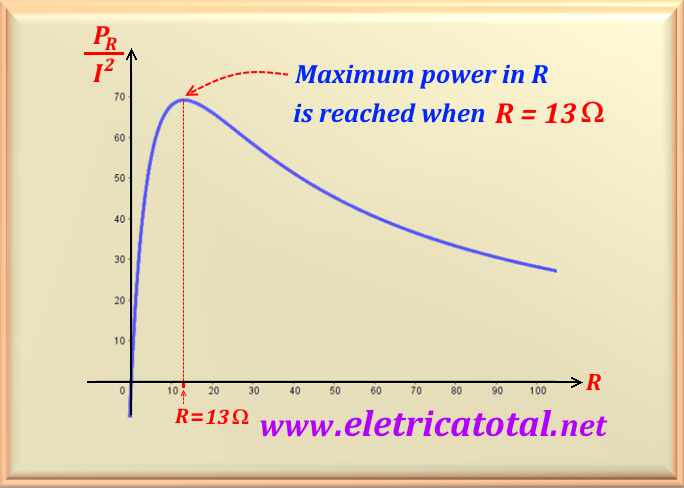Problem 15-13 Source:
Problem elaborated by the author of the site.
Based on the previous problem, considering the circuit shown in Figure 15-13.1, determine to which value
of R the maximum power dissipation occurs in it.
Solution of the Problem 15-13
Note that we already determined in the previous problem that
I = Ia. Therefore, we will solve using as variable the
current I. Thus, we conclude that Va = 2 I, and that
the current source 2 Va = 4 I. So we can write that
IR = 4 I - Ib. After these considerations and
based on the circuit shown in Figure 15-13.1, let's make the mesh indicated
by the orange arrow. So:
Algebraically rearranging the above equation, we will find a relation between I and Ib. So:
As IR = 4 I - Ib, replacing Ib with the above equation and effecting an algebraic manipulation we will find:
Knowing the value of IR , we can calculate the power dissipated by R and then calculate the value of R for get the maximum power dissipated by it. This requires some basic knowledge of Advanced Calculation . For those who know this content we have prepared an article in
PDF that can be accessed Click HERE!!!. But we can advance that the value found is:
To confirm this result we show in the figure below a graph, which was obtained from the power equation dissipated by the resistance R given by the expression below:
Making an algebraic arrangement, we get:
So by plotting this equation in a program like Geogebra, we get the curve
shown in the Figure 15-13.2. Note that the graph clearly shows that the
maximum power dissipated by R is when its value is equal to
R = 13 ohms.


